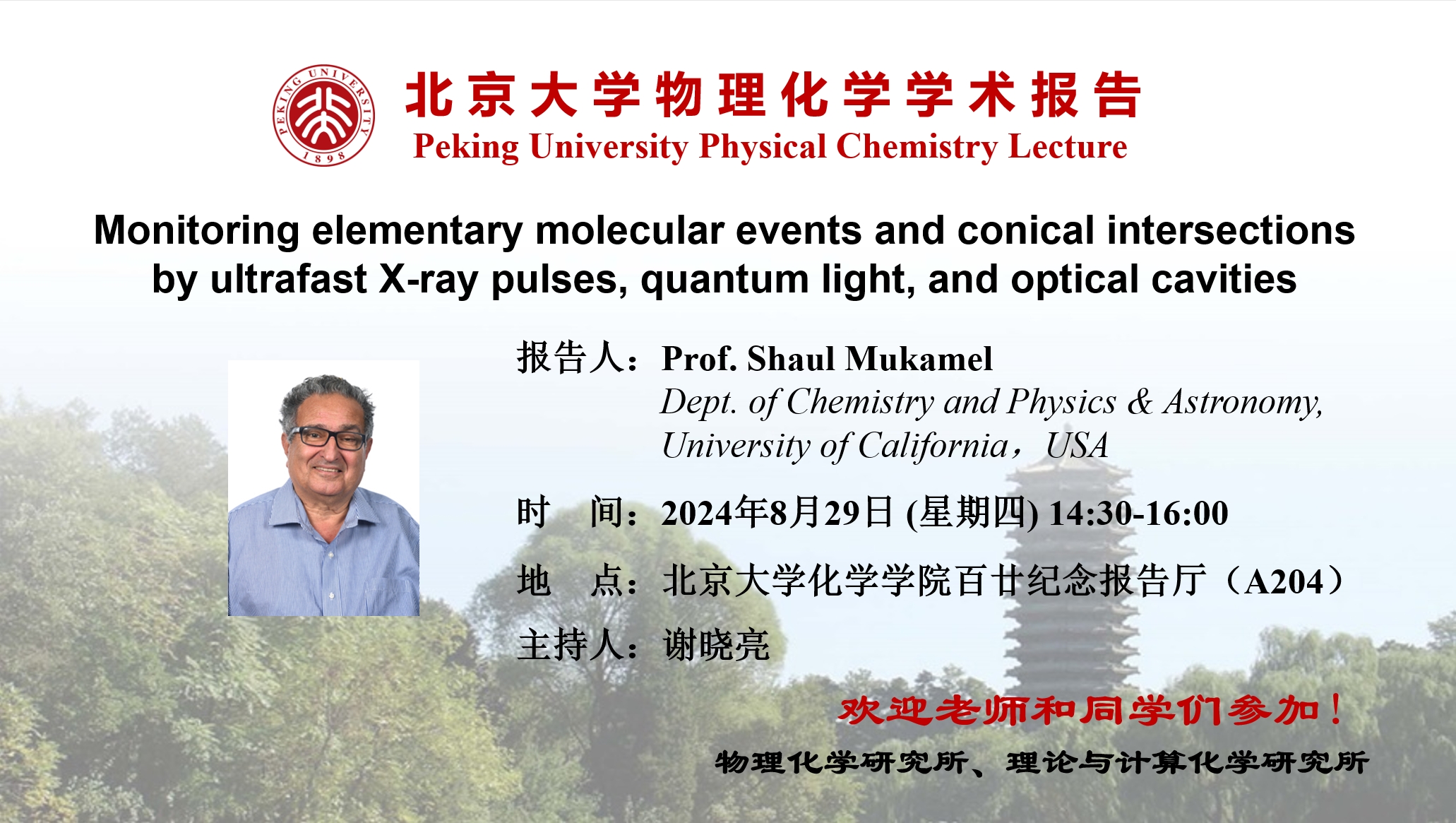Speaker: Prof. Shaul Mukamel, Dept. of Chemistry and Physics & Astronomy, University of California, USA
Time: 14:30-16:00 p.m., Aug 29, 2024, GMT+8
Venue: Rm. A204, CCME, PKU
Abstract:
Novel X-ray pulse sources from free-electron lasers and high-harmonic generation setups enable the monitoring of elementary events molecular such as the ultrafast passage through conical intersections on unprecedented temporal, spatial and energetic scales. The attosecond duration of X-ray pulses, their large bandwidth, and the atomic selectivity of core X-ray excitations offer new windows into photochemical processes. We show how the Orbital Angular Momentum of twisted X-ray light can be leveraged to detect vibronic coherences and time evolving chirality emerging at conical intersections due to the bifurcation of molecular wavepackets. Employing quantum light in multidimensional spectroscopy is opening up many exciting opportunities to enhance the signal-to-noise ratio, improve the combined temporal, spatial, and spectral resolutions, and simplify nonlinear optical signals by selecting desired transition pathways in second and third order signals. We show how photoelectron signals generated by time-energy entangled photon pairs can monitor ultrafast excited state dynamics of molecules with high joint spectral and temporal resolutions, not subjected to the Fourier uncertainty limitation of classical light. Two-entangled-photon absorption scales linearly with the pump intensity, allowing the study of fragile biological samples with low photon fluxes, and quantum interferometry can enhance the signals. Optical cavities provide another means for controlling the photophysics of molecules by making use of strong light–matter coupling without employing strong external laser pulses. A quantum dynamical study of charge migration in molecules in an optical cavity demonstrates how to trigger and manipulate charge migration pathways that are originally inactivated or suppressed in the bare molecule.
Source: College of Chemistry and Molecular Engineering, PKU
